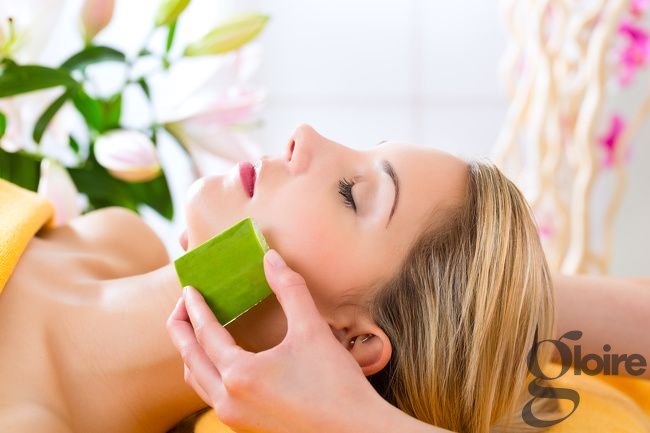Understanding Melanin and Its Role
Melanin is a natural pigment produced by melanocytes in the skin. It determines skin, hair, and eye color, and its production increases when exposed to sunlight to protect against UV damage. However, excess melanin can lead to conditions like hyperpigmentation, dark spots, and uneven skin tone. Before diving into methods to reduce melanin, it’s essential to understand the factors influencing its production.
Factors Affecting Melanin Production
- Sun Exposure: UV radiation stimulates melanin production as a protective mechanism.
- Genetics: Your skin color and melanin levels are significantly influenced by your genes.
- Hormonal Changes: Conditions like pregnancy or hormonal imbalances can trigger melanin overproduction.
- Inflammation: Acne scars or injuries can result in post-inflammatory hyperpigmentation.
- Age: As we age, melanin production can become irregular, causing age spots or patches.
Natural Ways to Reduce Melanin
If you’re wondering how to reduce melanin in skin naturally, there are several effective methods. These remedies are easy to incorporate into your daily routine and provide long-term benefits for maintaining healthy, glowing skin.
1. Use Natural Skin-Lightening Ingredients
Natural ingredients can help reduce melanin production and lighten dark spots without harsh chemicals. Here are some commonly used remedies:
- Lemon Juice: Rich in vitamin C, lemon juice inhibits tyrosinase, an enzyme crucial for melanin production.
- How to Use: Apply freshly squeezed lemon juice to the affected areas for 10-15 minutes. Rinse thoroughly.
- Aloe Vera: Contains aloesin, a compound that reduces melanin production by inhibiting tyrosinase.
- How to Use: Extract fresh aloe vera gel and apply it to your skin twice daily.
- Papaya: Contains papain, an enzyme that gently exfoliates the skin and reduces melanin.
- How to Use: Mash ripe papaya and apply it as a face mask for 20 minutes.
- Turmeric: Known for its anti-inflammatory and melanin-reducing properties.
- How to Use: Mix turmeric with milk or honey and apply it to your skin. Leave for 15-20 minutes before washing off.
2. Adopt a Balanced Diet
Certain foods can help decrease melanin production internally. A diet rich in antioxidants, vitamins, and minerals is essential for healthy skin.
- Vitamin C-Rich Foods: Citrus fruits, strawberries, and bell peppers boost collagen production and inhibit melanin.
- Vitamin E-Rich Foods: Almonds, sunflower seeds, and avocados protect skin cells from damage.
- Glutathione: Found in spinach, avocados, and asparagus, glutathione helps reduce melanin and lighten the skin.
3. Protect Your Skin from the Sun
Since UV rays are a significant trigger for melanin production, sun protection is critical.
- Use Sunscreen: Choose a broad-spectrum sunscreen with SPF 30 or higher.
- Wear Protective Clothing: Long sleeves, wide-brimmed hats, and sunglasses can shield your skin.
- Seek Shade: Avoid direct sunlight between 10 AM and 4 PM, when UV rays are strongest.
Effective Skincare Practices
Proper skincare can help reduce melanin and improve your overall complexion. Here’s how to decrease melanin in skin through an optimized routine:
1. Exfoliation
Regular exfoliation removes dead skin cells, promoting cell turnover and reducing dark spots caused by excess melanin.
- Physical Exfoliants: Scrubs containing sugar or coffee grounds.
- Chemical Exfoliants: AHAs (glycolic acid) and BHAs (salicylic acid) help fade pigmentation.
2. Hydration
Keeping your skin hydrated prevents dryness, which can worsen hyperpigmentation.
- Moisturizers: Look for ingredients like hyaluronic acid and glycerin.
- Hydrating Masks: Use masks containing cucumber, honey, or aloe vera.
3. Topical Treatments
- Niacinamide: Reduces melanin transfer to skin cells.
- Vitamin C Serums: Lighten dark spots and protect against oxidative stress.
- Licorice Extract: Inhibits tyrosinase and soothes inflammation.
Lifestyle Changes for Long-Term Results
Adopting healthy habits can help you maintain an even complexion and reduce melanin naturally over time.
1. Stay Hydrated
Drink at least 8 glasses of water daily to flush out toxins and maintain skin health.
2. Exercise Regularly
Physical activity improves blood circulation, delivering nutrients to your skin and promoting a natural glow.
3. Sleep Well
Lack of sleep can trigger stress, increasing melanin production. Aim for 7-9 hours of quality sleep every night.
FAQs About Melanin Reduction
How Long Does It Take to See Results?
Results vary based on the method used and individual factors. Natural remedies may take several weeks to show noticeable improvements.
Are Natural Remedies Safe for All Skin Types?
Most natural remedies are safe but perform a patch test before applying any ingredient to your face to avoid allergic reactions.
Related Resources
Explore more skincare tips and treatments on Gloire’s blog:
- How to Remove Tanning: 101 Guide
- Uneven Skin Texture: Types, Causes, and Treatments
- Skin Pigmentation: Types, Causes, Treatments, and Prevention
- How to Achieve Korean Glass Skin: 10 Tips and Tricks
This guide on how to reduce melanin in skin naturally combines actionable tips and proven methods to help you achieve a brighter complexion. By incorporating these practices into your daily routine, you can effectively manage melanin levels and enjoy healthier, radiant skin.








